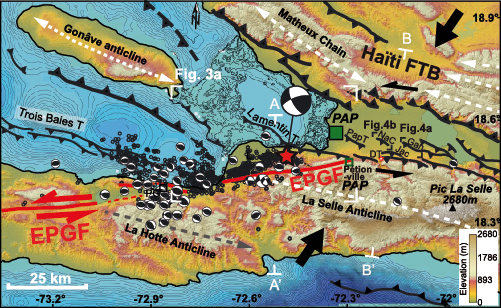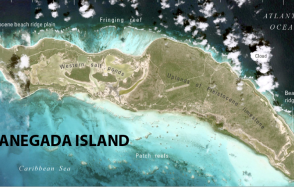Seismotectonic context of southern Haiti: a new model for the magnitude Mw7.0 earthquake of January 12th, 2010
Despite the magnitude of the deadly earthquake of January 12th, 2010, the seismotectonic context and active faults in the epicentral zone were still poorly understood.

Publication date: 10/02/2016
General public, Press, Research
Related teams :
Tectonics and Mechanics of the Lithosphere
Related themes : Natural Hazards








